In an excellent post the RockyMountainNavy Gamer describes how he combines books and wargames to learn more about the Eastern Front in World War II. Inspired by the article I thought about how my reading habits have changed since I started playing wargames.
I always liked reading, but if you had asked me a couple of years ago, what kind of books I read, I would have answered ‘Mainly zero-brain-power-level-books!’. Never had it crossed my mind to read anything but fiction. This has changed. I wanted to know more about the conflicts that I was setting up on my table. And that almost automatically set off a feedback loop. I played a game, wanted to know more about it, read a book about the conflict, understood more what was going on, played the game again, saw how some of the rules are influenced by the historical events, wanted to know more,… You get the picture.
In the series Books and Wargames, I would like to talk about, well, books and wargames. I will pick a combination of one wargame and one book which worked for me very well. We start with Bernard Fall’s Hell in a Very Small Place and Kim Kanger’s Dien Bien Phu: The Final Gamble
The Game
Dien Bien Phu: The Final Gamble designed by Kim Kanger and published 2014 by Legion Wargames is a simulation of the final battle of the First Indochina War. French forces had occupied a valley close to the border to Laos. Relying on their superior artillery and being convinced that the valley could easily be supported by air, a total of 16000 French troops took on some 50000 Viet Minh communist revolutionaries. The battle started on March 13 with a heavy bombardment from the Viet Minh side. The strength and accuracy of which took the French by surprise. The original hope that the Vet Minh wouldn’t be able to sustain such an onslaught over a prolonged period of time was soon crushed. Over the course of the next two months the noose around the French position tightened and the battle eventually ended on May 7, 1954 with a French defeat.
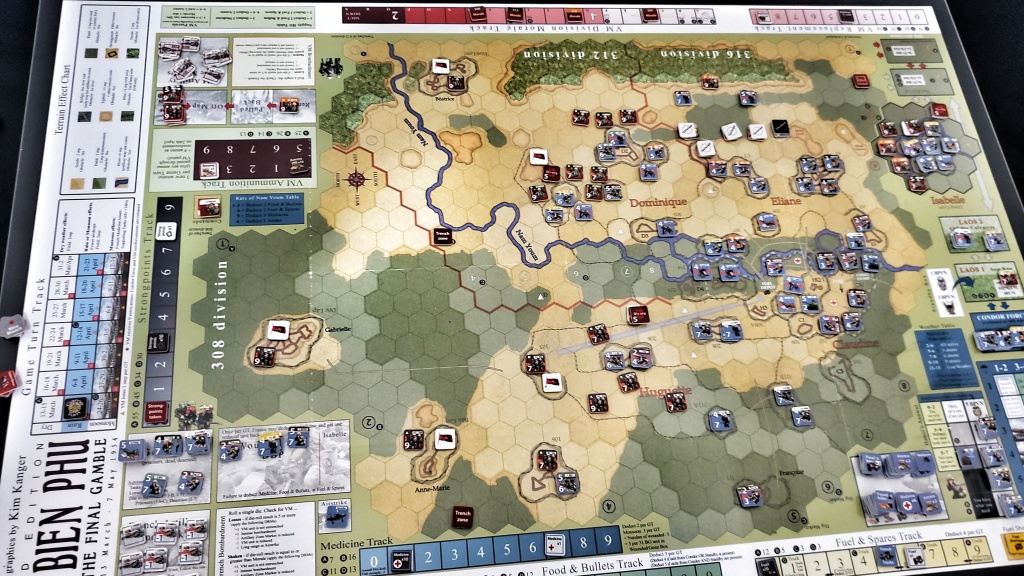
The game manages to capture the siege character of the battle in a brilliant way. Don’t be fooled to think it’s a rather static game. On the contrary, the constant back and forth with many important decisions to make on both sides makes for a very dramatic and tense gameplay:
On the French side you have to cover as much frontline as possible and make sure to reduce the unit density to mitigate artillery effects. Don’t get too attached to your strongholds. You won’t be able to hold on to all of them anyway. But do not let go of them without a fight either. Each lost stronghold will increase the Viet Minh trench system. And once the trenches are built, they will stay. Also, don’t let the Viet Minh troops get any rest for recover. So, do not just retreat to consolidate a smaller garrison. It also won’t take long before you will have to worry about supplies and replacements. Remember, everything has to be flown in and there are only so many planes available. Soon you have to pick between food, ammunition, medical supplies and reinforcements. You will be short of everything. A nerve-racking mini-game inside the actual game simulates how many and which of the planes eventually make the drop-off. And of course, there’s no place for you to go. You are surrounded by enemy troops, the landing strip is destroyed and the valley is too remote to hope for outside help other than the air drops.
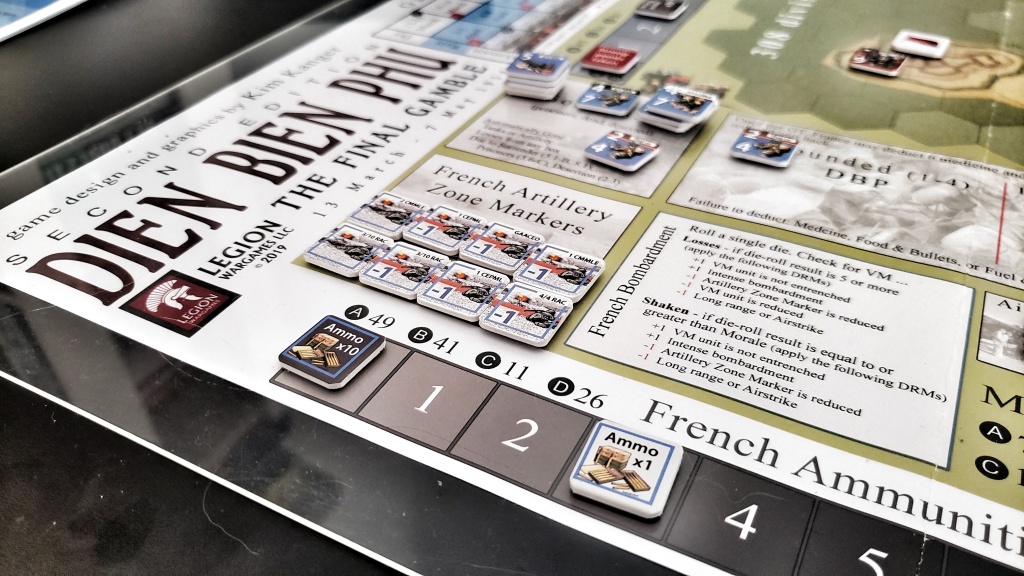
On the Viet Minh side you want to knock out the French artillery as soon as possible. While the French might have the better trained troops, the Viet Minh draws its strength from the sheer numbers of soldiers it has available. You won’t have the logistics to attack all French strongholds at the same time. But try to stretch out the French defensive line as far as possible. Don’t forget to advance the trench system. It offers additional cover for your infiltration attempts. Plus, the smaller the French fortified area, the larger your chance to pick up some of the ‘miss-dropped’ French supplies. Do not be too cautious. The Viet Minh expects constant progress. Failing to do so results in a loss of moral and with a reduced moral you won’t stand a chance against the French.
This is a fascinating game. And like wine or whisky (or Cachaça), it’s getting better over time. You will need at least a game to just get a picture of the inner workings of the game, of how the giant clockwork functions. And then you play it again and again and you start to wonder how the French should ever be able to win. It’s like a car crash that is supposed to happen and you can’t change anything about it. But then you start trying different strategies to defend the valley. And the attackers will come up with yet another diabolic plan for their siege. It is certainly interesting to play along the historic events, but the real challenge is probably to try your own ideas of how to attack/defend the valley. The possibilities are probably not endless but certainly enough to keep you busy for a long time.
The Author
Bernard Fall was born 1926 in Austria. His family migrated to France where he, as a 16 year old, joined the French resistance. He served in the French Army from 1944 until 1946.
After his service he studied in France, Germany and later the United States. In 1953 he went to Vietnam for his studies on Indochina. When he arrived, the Indochina War was in its seventh year. His French citizenship allowed Bernard Fall to accompany French troops and observe the conflict up close. Early on he predicted a French defeat.
After the war he continued covering Vietnam and returned several times. He supported the American military presence in Vietnam and his work was deemed very valuable for American diplomats.

Accompanying a company of the 1st Battalion 9th Marines Bernard Fall was killed on February 21, 1967 in the Thừa Thiên-Huế Province when he stepped on a Bouncing Betty.
The Book
Why read a book if you know what’s going to happen in the end? While this is certainly true for any whodunit, reading a historic account is of course different. You do so because you want to know what happens along the way. But there’s not just one way to tell a story. If you ask three different authors to describe a series of events, you probably end up with three different kinds of stories. On the other side you will find readers with different tastes. I prefer a book that finds a balance between statistics, situational analysis and interesting narrative. And Bernard Fall’s Hell in a Very Small Place is a perfect example of such a book.
Fall describes in his book the events in chronological order. Two recurring themes compete in the book. Early on Fall makes the point that according to engineering manuals, some 36000 tons of engineering materials were needed to fortify a garrison the size of Dien Bien Phu. But the lack of planes and time lead to the fact that French forces were eventually 30000 (!) tons short of engineering material. And throughout the siege the French forces should suffer from the almost non-existing air support. A constant shortage of ammunition, medical supplies and reinforcements would hunt the French command.
The other aspect that Fall understands brilliantly to convey is the constantly shrinking size of the French garrison. Detailed descriptions of the losses of the smaller strongholds, illustrated with a plethora of maps showing the siege at various stages leaves the reader with an almost claustrophobic feeling.
If you now have the impression that the book is just a sequence of dire accounts of military siege episodes you are mistaken. Fall leaves room for the humans in the conflict and their bravery and courage and their sometimes tragic-comically ordeals. And then you have to smile and remember that to some extend even that is part of Kanger’s game. Take a look at the French supply counters. Yes, they are just cardboard chits, but the choice of counter art is unique and it’s not an affront but rather a nod towards the French and their savoir-faire.

Final Thoughts
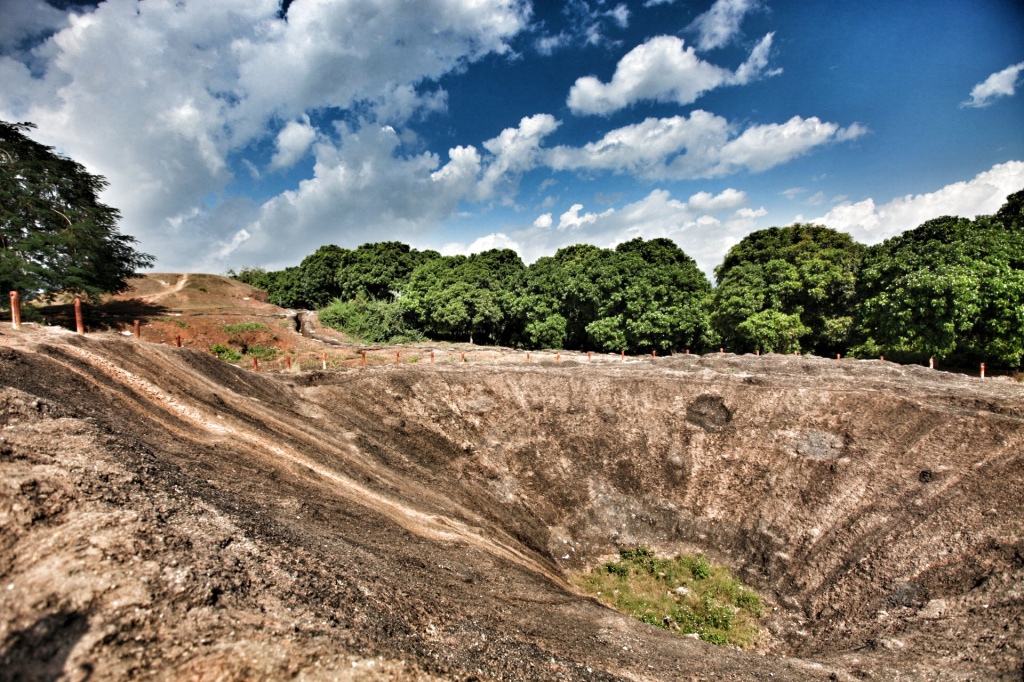
A few books have been written about the battle at Dien Bien Phu. Bernard Fall’s is surely the classic among them. Almost 54 years after its first publication the book doesn’t feel stale. On the contrary, you a sense for Fall’s intimacy with the conflict on almost every page. But this proximity comes for a price. Unlike more recent publications, Fall never had a chance to study the Viet Minh side of the conflict. He had to rely on the limited amount sources available to him. (If you are interested in a detailed description of immense logistical efforts that were undertaken by the Viet Minh,Valley Of The Shadow: The Siege Of Dien Bien Phu by Kevin M. Boylan and Luv Olivier might be a good starting point.)
You don’t need to read Fall’s book to play the Kanger’s game. Nor do you have to play the game when you just want to read the book. But the synergy that arises from combining both is amazing and probably appeals to every warmer or history buff. After reading the book I saw Kim Kanger’s depiction of the conflict with completely different eyes. I’m not sure whether initially I really appreciated the level of simulation the game offers. On the other side it was very immersive to break out the game while reading the book. Both, the game and the book have and always will have a special place on my shelf.
Abraços,
Carsten

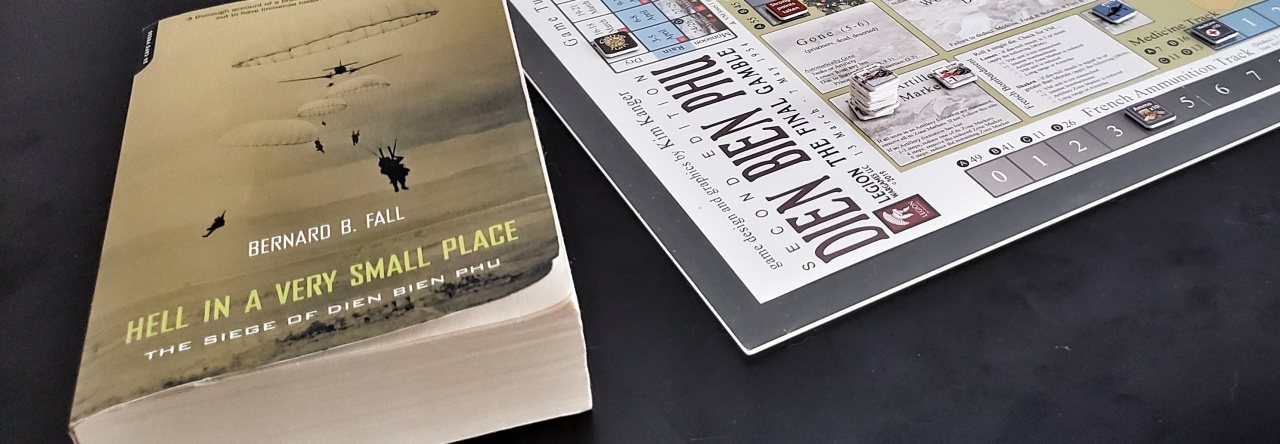
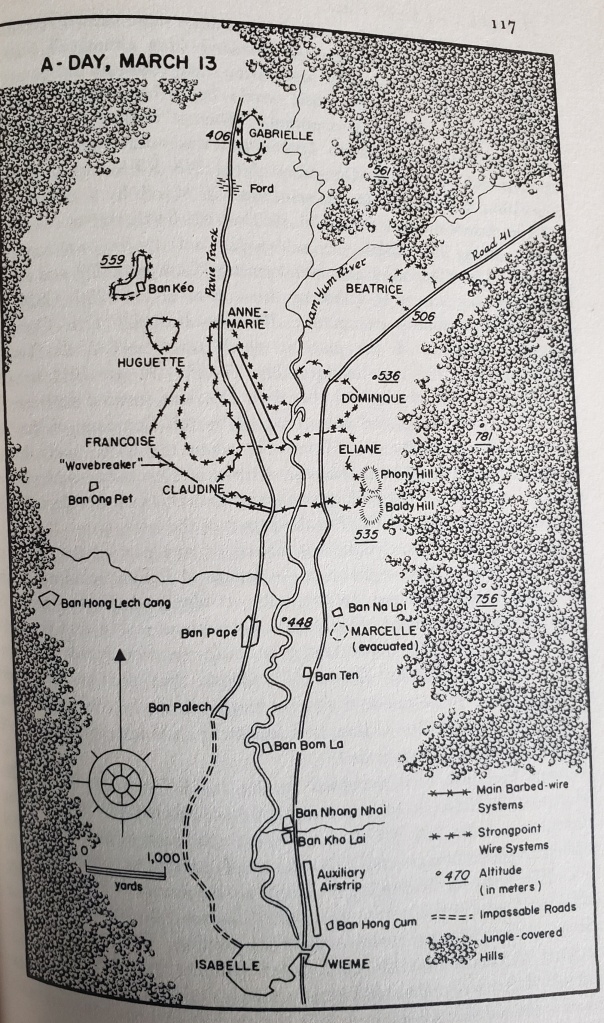

Thanks for the post; very interesting combination – I usually follow similar suit, trying to combine historical books and the games I like most. Recently it was “Count Belisarius” by Robert Graves and Commands Colors Medieval as well as Cataphract (from great Battles of History). That makes the game so much interesting and attached to bigger picture.
LikeLiked by 1 person
Nice! I still have to try the Commands and Colors system. But I guess I know now where to start.
LikeLike
Nicce post thanks for sharing
LikeLike